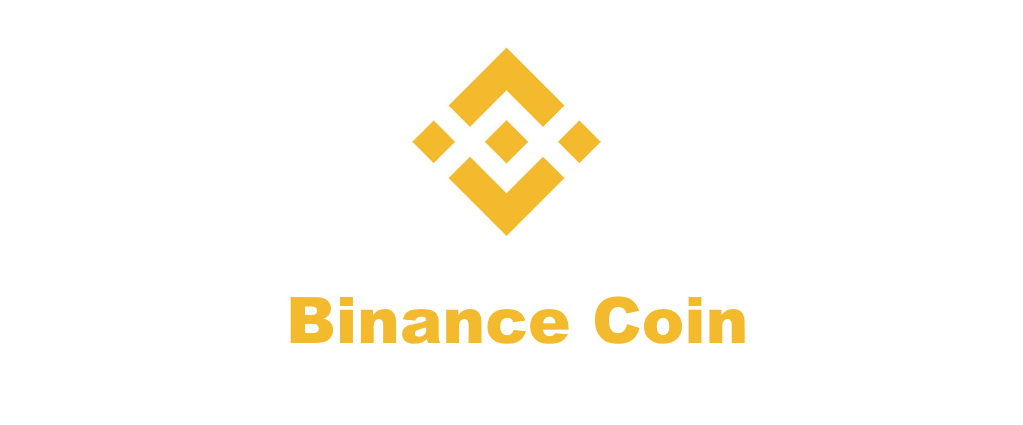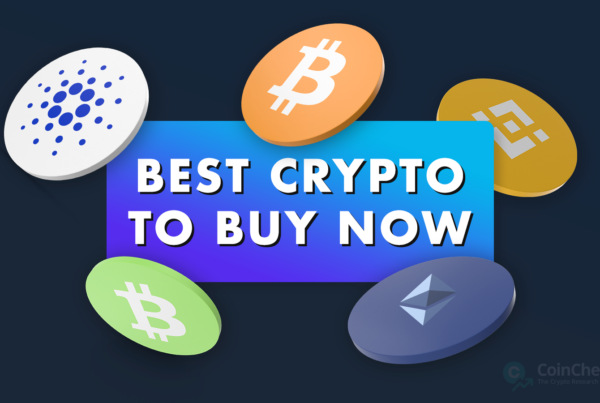After another week of a rather bearish trend, the total valuation of the cryptocurrency market dropped to $2.50 trillion. In the last week, BTC lost over 8% and ETH over 6%. However, cryptocurrencies from the so-called “ETH killers” group were hit the hardest, as Cardano (ADA), Polkadot (DOT), and Solana (SOL) all suffered losses of nearly 20%. While red numbers are without a doubt something you don’t want to see in your portfolio, the drop in price also means that some cryptocurrencies are currently undervalued. Which are the coins that are currently changing hands at a discounted price? Which coins look like a good investment in Week 48? Find out the answers to these questions and more in the following article.

3. Efinity (EFI)
Efinity is a Polkadot-based blockchain platform designed to provide an efficient and scalable platform for minting, transferring, and trading NFTs. The Efinity team aims to develop a network capable of performing up to 1,000 transactions per second with confirmation times of under 6 seconds. By featuring low network fees and including a built-in NFT marketplace, Efinity hopes to revolutionize the NFT sector. The platform is developed by Enjin, a company and cryptocurrency project focused on blockchain gaming and NFTs.
Efinity is competing for one of the Polkadot parachains in the ongoing auction
The Efinity project is currently bidding for a parachain slot in the ongoing Polkadot parachain auction. Supporters and investors can help the platform secure a much-needed Polkadot parachain lease by joining the Efinity Crowdloan. Participants can lock their DOT directly via Polkadot.js or through multiple exchanges that support the crowdloan including Binance, Kraken, Huobi, OKEx, and KuCoin. If Efinity does not win the parachain auction, contributors will receive their DOT back right after the end of the auction period (December 16, 2021). If, however, Efinity ends up winning the parachain auction, contributed DOT will be returned to supporters only after the project’s parachain lease expires (this is 96 weeks). To reward crowdloan participants, Efinity has set up a 200 million EFI reward pool (or 10% of the total EFI supply). EFI rewards will be vested linearly over the 2-year period. Currently, participants are promised 95 EFI per each DOT staked in the crowdloan. Do note that the end reward will likely be smaller as more DOT are contributed. Top 250 crowdloan contributors will also receive a one-of-a-kind NFT and another 250 NFTs will be distributed among other lucky crowdloan participants. Efinity is aiming for Slot 4, which is set to be auctioned between December 2 and December 9. Given the fact that Efinity developer Enjin already has a pedigree in the NFT sector, we believe that EFI is a sound investment and an even better one if the project succeeds in securing a parachain slot. Nevertheless, you can also contribute your DOT to the Efinity Crowdloan and help the project in securing a Polkadot parachain slot. The team encourages everyone to familiarize themselves with the Efinity platform and do their own research before participating in the crowdloan.

2. Cardano (ADA)
Cardano is a decentralized blockchain platform focused on creating a smart contract-enabled environment on which developers can build decentralized applications. Cardano utilizes a Proof-of-Stake consensus model and aims to provide a more sustainable, scalable, and transparent operation compared to other smart contract blockchains. The project was started in 2017 by Charles Hoskinson, a mathematician, who was once part of the Ethereum developer team. The team raised $62.2 million for the project’s development through an ICO. The development of the project is now overseen by three main organizations, the IOHK, Cardano Foundation, and Emurgo. Hoskinson and IOHK strive to follow the principles of academic peer review in the project’s development process. The native asset of the Cardano blockchain is called ADA, but previously this year, the project rolled out an update, which allows users to issue other tokens on the Cardano blockchain as well. In September 2021 smart contracts debuted on the Cardano mainnet, which was a major milestone for the ecosystem.
ADA is currently trading at a discounted, 3-month low, price
ADA was one of the hardest-hit top-tier cryptocurrencies last week. Its price dropped by a whopping 20% from $1.88 to below $1.50. However, the downward trend is likely to reverse soon as protocol improvements and updates are set to roll out. This represents a unique opportunity for Cardano believers and supporters to amass even more ADA before new functionalities are deployed. Following the Alonzo upgrade that brought smart contracts to the Cardano mainnet, the team is now working on improving Plutus, a platform that enables developers to write decentralized applications (dApps) with scripting capabilities that interact with distributed ledgers. In addition, the Plutus Application Backend (PAB) provides an environment in which developers can test dApps, before deploying them to a live production environment. Another Plutus update is scheduled to be released by the end of November. In addition, IOHK announced they will be making small adjustments to the Cardano mainnet protocol to improve the way the network handles a large volume of data as well as transactions and scripts of different complexity and size. As part of this effort, the block size will be increased by 8KB to 72KB and Plutus script memory units per transaction will be bumped up to 11.25 million (12.5% increase). Adjustments will be applied to the mainnet on epoch 306, on Wednesday, December 1, 2021, at 21:45:00 UTC. The continued development also translates to the rapid expansion of the Cardano ecosystem, which became especially evident after the Alonzo upgrade. In addition, ADA Finance, a Cardano-powered project recently won the Best DeFi project of the year award at the 2021 AIBC Summit in Malta. As if that were not enough, it seems to only be a matter of time until we will be able to swap tokens on DOEX, the first decentralized exchange on Cardano. The DOEX team aims for a Q1 2022 launch.

1. Binance Coin (BNB)
Binance Coin (BNB) was originally launched in 2017 as an ERC-20 token sold through an initial coin offering (ICO). In April 2019, the Binance Chain was launched, and all the ERC-20 tokens were replaced with the BNB coin, which became the native cryptocurrency of the new blockchain. Binance Chain is still completely centralized, with Binance having complete control of block management. Binance users who utilize BNB to pay for trading, withdrawal, and listing fees enjoy discounts. While this used to be pretty much the only use case of BNB, the coin has a far greater utility now as it allows users to pay for gas fees, stake BNB, as well as participate in DeFi, liquidity pools, and DEX trading. BNB is also used to determine eligibility to participate in Initial Exchange Offerings (IEOs). In addition, the Binance ecosystem keeps expanding, which means that new products and services are regularly added. In June, for example, Binance launched its own NFT marketplace.
Binance Smart Chain to undergo Bruno hard fork on November 30
Binance recently announced that the Binance Smart Chain will soon undergo a hard fork upgrade. Dubbed the Bruno Upgrade v1.1.5, this hard fork upgrade, will introduce the real-time BNB burning mechanism as described in BEP-95. The fee-burning mechanisms included in BEP-95 are largely like the ones included in the London hard fork that changed the way how Ethereum blockchain operates in August this year. The Binance Smart Chain hard fork will also improve the node syncing speed by 60-70% (BEP-93) and deploy some other minor bug fixes and improvements. The Bruno hard fork will execute at block height 13,082,000. Given the current block generation speed, this is forecasted to occur around November 30 at 08:00 AM UTC. The newly introduced gas fee burning mechanisms will speed up the burning process of BNB. However, Binance will not cease to conduct regular quarterly BNB burns nor diminish the amount of BNB to be burned. In fact, the real-time fee burning mechanism will function completely independently of scheduled quarterly burns, which will further improve the intrinsic value of BNB in the long run. In addition, we are already at two-thirds of Q4 2021, meaning that another BNB quarterly burn is approaching fast. Given that the cryptocurrency markets were in a bullish trend throughout most of the quarter so far, the 18th quarterly BNB burn set to take place at the beginning of January 2022 is likely to be among the bigger ones by BNB valuation once again.



